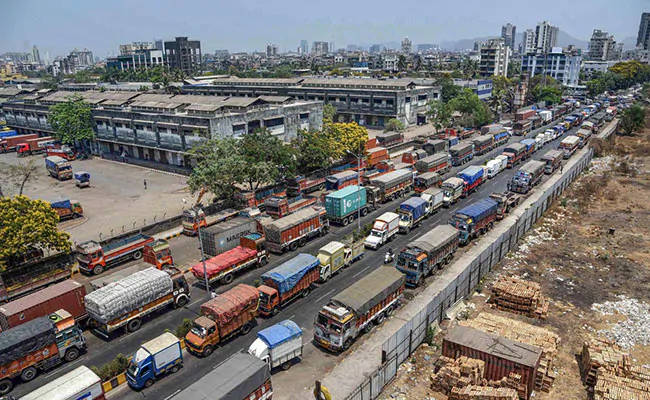Ends Truck Driver Strike- Hit and Run Law Protest
The conclusion of the truckers’ strike is confirmed as the central authorities promise that a resolution regarding the hit-and-run law will be made following discussions.
Protest by Truck Drivers Resolved
The government and transportation representatives have reached a consensus, urging truck drivers to promptly return to their duties. Both parties have agreed that transport operations should resume without delay, signaling a resolution to the recent unrest among truck drivers.
Motorists from various Drivers’ Associations gathered for a protest rally in Jagdalpur, Bastar district, on January 2, 2024. The demonstration aimed to voice opposition to a specific provision within the recently enacted penal law concerning hit-and-run accident cases.
In response to the widespread protests staged by truckers’ associations across the nation, the Ministry of Home Affairs (MHA) has sought to quell the rising discontent by providing reassurances to representatives of the All India Motor Transport Congress (AIMTC). A key point of contention revolves around the impending implementation of new regulations encapsulated within the Bharatiya Nyaya Sanhita (BNS). The MHA, keenly aware of the unrest among the truckers, has conveyed a clear message that the stipulations of the BNS have not yet been enforced. This acknowledgment aims to dispel the anxieties gripping the trucking community and open the door to constructive dialogue.

Decision with AIMTC
In an effort to foster a collaborative resolution, the MHA has expressed a willingness to engage in meaningful discussions with the AIMTC. The ministry recognizes the importance of addressing the concerns raised by the truckers, understanding that their perspectives are invaluable in shaping a comprehensive and effective legal framework. By extending an olive branch through the promise of consultations, the MHA signals its commitment to a consultative approach, emphasizing the need for an inclusive decision-making process.
Despite the simmering tensions
Despite the simmering tensions, the MHA remains steadfast in its assurance that no final decision regarding the implementation of the BNS will be made without thorough deliberations with the AIMTC. This deliberate approach underscores the government’s commitment to democratic principles and a consultative governance style, ensuring that the voices of the affected parties are heard and considered. The MHA’s pledge to engage in talks echoes the democratic ethos that underpins the nation’s legal and administrative processes.
At the heart of the protests is the truckers’ vehement opposition to the stricter penalties outlined in the proposed amendments to the law, specifically in cases of hit-and-run incidents. The MHA acknowledges the concerns of the truckers regarding the potential ramifications of these amendments on their livelihoods. In an effort to allay fears and instill confidence, the ministry urges the truckers to bring an end to their strike, emphasizing the significance of maintaining the smooth functioning of the transportation sector.
The MHA’s conciliatory stance recognizes the pivotal role played by the trucking industry in the nation’s economy. The government is cognizant of the interconnectedness of various sectors and the cascading impact that disruptions in transportation can have on the broader economic landscape. The call for an end to the strike is not merely a plea for compliance but a strategic move aimed at safeguarding the stability and efficiency of the logistics and supply chain networks.
Conclusion
In conclusion, the evolving situation between the MHA and the truckers’ associations reflects a delicate dance between the assertion of regulatory measures and the acknowledgment of legitimate concerns within a democratic framework. The assurance that the BNS has not been implemented, coupled with the commitment to engage in dialogue, exemplifies a nuanced approach that seeks to balance the imperatives of governance with the participatory ethos of democracy. As both parties navigate the path towards a resolution, the hope is that these deliberations will pave the way for a legal framework that is not only robust but also considerate of the multifaceted challenges faced by the trucking community in the contemporary socio-economic context.
Thanks for reading MorTimes Blog.



























